What to do at home if a cat is bitten by a bumblebee, bee, wasp
What to do if a cat is bitten by a bumblebee or a bee?
A cat was bitten by a bumblebee, wasp, bee, what to do at home? The cat was bitten by a bumblebee, wasp, bee what to do at home?
Cats are curious creatures with a highly developed hunting instinct. No cat will miss the opportunity to catch a buzzing insect, but a bee sting can be very dangerous. Especially if the cat was bitten by a bumblebee
Bite symptoms
As a rule, if a cat is bitten by a bee, the symptoms are localized at the site of the bite and appear locally. In the case when a bee stung and the owner of the animal did not notice this, you need to know the clinical signs:
- The bite site is very swollen (may double in size), becomes hot; The cat is restless, shaking its paw or head; There may be salivation.
The cat was bitten by a bumblebee, wasp, bee what to do at home?
A local reaction is not life-threatening for the animal. But allergic reactions, although rare, carry a real danger to the pet’s life. Symptoms of an allergic reaction in a pet:
- Irregular heartbeat; Very strong salivation; Shortness of breath, hoarse breathing; state of shock; Quincke’s edema; Depression of consciousness, staggering gait.
First aid for a bumblebee sting
Every owner must know what to do if a cat is bitten by a bee. First of all, you need to provide first aid to the animal before taking the pet to the veterinarian.
When bitten, the bee leaves a stinger in the wound. First aid — get a sting. A tiny bee sting is almost impossible to get with your hands, you need to use tweezers and carefully remove it without crushing it. Before proceeding with the removal of the sting from the wound, the cat must be well fixed — any manipulation at the site of the bite will be very painful. After the sting is removed, the bite site should be washed with soap and treated with a solution of vinegar (1:1 with water) or chlorhexidine. Apply cold to the bite site — ice or any frozen product, be sure to wrap it with a cloth beforehand.
Bite treatment
The bite site can be treated with hydrogen peroxide, but the most effective way is to rinse with a solution of vinegar.
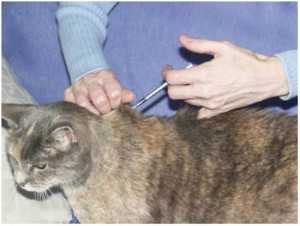
Soap will also help relieve some pain at the site of the bite, you should wash the wound regularly with soapy water.
If the bite fell on the eye area, then in no case should you rinse with vinegar or peroxide. Chamomile solution is used to wash the eyes.
A cold compress will help reduce the effects of a bite and lower the animal’s body temperature, because during the spread of bee venom, body temperature rises.
Treatment with drugs for the bite of a bumblebee, bee or wasp
A bee sting is always painful and can lead to serious complications. If bitten in the paw area, the animal will not be able to move normally for several days. And bites to the head, larynx, mouth, eyes or genitals can be deadly for a pet.
For the treatment of bites in the area of the paws or torso of an animal, local treatment is sufficient, no medical intervention is required. If a bee has stung in the head or genital area, it is imperative to carry out medical treatment and strictly under the guidance of a veterinarian. Any drugs and dosage should be prescribed by a doctor, even if it is impossible to deliver the animal to the clinic (phone consultations).
Treatment consists in arresting the spread of poison and absorption into the blood. Be sure to introduce prednisolone — to reduce the manifestation of allergic reactions. Prednisolone can be given as tablets or intramuscularly. Injections are more effective, the medicine begins to work much faster than tablets, and it is not always possible to give a cat a tablet. The dosage of the drug should be calculated by a veterinarian, but if it is impossible to get advice, the dose of the drug is 0.1 ml per 1 kg of the animal. Prednisolone is allowed to be administered every 12 hours.
Instead of prednisolone, you can give dexamethasone at a dosage of 0.2 ml per 1 kg of animal weight. It is undesirable to give suprastin to animals, because it often causes adverse reactions in cats.
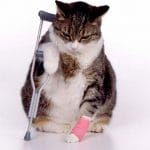
Appeal to the veterinarian
When a cat shows signs of an allergic reaction, the animal must be taken to the veterinarian — in this case, the bill can go on for minutes. When a severe allergy occurs — for example, with swelling of the larynx, respiratory arrest, only a doctor can restore breathing by installing an oxygen tube.
In addition, in case of edema or the onset of a state of shock, it is imperative to inject adrenaline — including intravenous drips. Adrenaline should be administered carefully and slowly, only a qualified veterinarian can calculate the dosage and frequency of administration.
But even if the animal does not have an acute reaction, and the bite fell on the head, mouth, eyes or genitals, it is imperative to show the pet to the veterinarian. Swelling of the larynx or mouth can, if left unchecked, greatly impair respiratory function. A bite in the eye area can lead to blindness or inflammation. And swelling in the genital area can slow down or completely stop urination — in this case, a catheter is necessary.
Be sure to take kittens to the doctor, especially blind ones, small kittens have weak immunity and the dosage of poison significantly exceeds the doses of an adult animal.
Some breeds of cats are more prone to allergic reactions — for example, Angora, Persian, British cats — these animals must be seen by a doctor, as an allergic reaction can be delayed.

Prevention
Prevention of bee stings can only be home protection — mosquito nets on the windows, nets in the doors. Animal bowls should not be placed outside.
And, of course, pets must be carefully monitored and treated with repellents.
Most often, a bee sting does not pose a danger to a cat, the symptoms disappear in a few days, but the location of the poison causes great suffering to the pet. If the animal was previously bitten by bees, and it did not have allergic reactions, then the cat will tolerate the next bite well.
The cat was bitten by a bumblebee, what should I do?
With the onset of spring, after wintering in hives, on sunny days, bees begin to fly around the surrounding area, collect nectar from flowering flowers of plants, trees that secrete nectar.
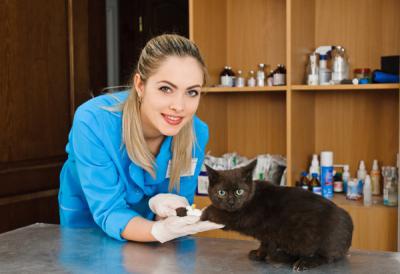
While walking with Cats and puppies, which sniff almost all the flowers in the area, it often happens that they are attacked by bees and wasps. At the same time, in Cats, the paws and muzzle most often suffer from bites, a bee and a wasp in a Cat can also sting her lips, tongue, and even the mucous membrane of the oral cavity (in the event that your friend tries to swallow them).
Why is a bee sting dangerous for a Cat?
When a bee stings, although bees don’t know how to bite and everyone knows it, it’s more correct to say that a bee stung a Cat, what happens is that the bee digs into the Cat’s body, leaving a sting in it, which has a poisonous sac and notches. At the same time, their «relatives» — wasps, bumblebees and hornets can additionally bite your cat. For information, the bee stings living creatures only once, after which it dies (along with the sting, the bee in the body of the Cat leaves part of its intestines). Wasps, on the other hand, can sting a cat and a person many times, while remaining alive.
Cat owners should clearly understand that bees stinging a Cat always leave a sting with a poisonous sac. The sting of the bee together with the bag must be removed as soon as possible with nails, tweezers, eyebrow tongs. At the same time, when removing the sting, your task is not to squeeze the poison out of the bag and not to inject it into the body.
The owner’s first aid for a bee sting is as follows:
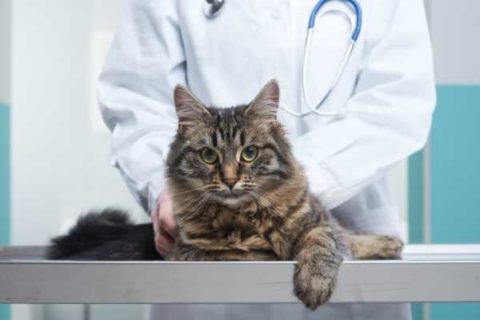
- immediately after a bee sting, you must carefully pull out the sting; attach a gauze swab moistened with a mixture of ammonia and water to the bite site, or rinse the wound with ammonia or ethyl alcohol, or just vodka. If none of the above is present, rinse with clean water; then cold is applied to the bite site to slow down the absorption of the poison and prevent swelling; you can use folk remedies — grated parsley leaves, and the milky juice of dandelion, and plantain leaves. You can also lubricate the bite site with honey (the meaning of this action is that hypertonic honey draws the poison out of the wound and prevents swelling); with multiple bitesgive the oshka plenty to drink; lubricate the bite site to relieve itching with an antipruritic antiallergic ointment (sinaflan, fenistil, 1% hydrocortisone ointment, etc.); inside the cat as an antihistamine we ask — suprastin, tavegil, diphenhydramine, tsetrin, edem, loratadine. The course of treatment with these tablets can be continued for several days.
Approximate doses of drugs for single use in acute allergic reactions in Cats if bitten by a bumblebee
Specifically, a doctor should prescribe injectable drugs and their dosage to a cat.
Attention! Doses of drugs for single and long-term use can vary greatly. The doses indicated below are for informational purposes and for single use.

1) Diphenhydramine, suprastin, tavegil.
If the Cat weighs up to 10 kg — take 0.1 ml of the drug for each kilogram of weight. That is, for a Cat weighing 6 kg, the dose will be 0.6 ml.
For a Cat weighing 10-20 kg — 1 ml. For a Cat weighing more than 20 kg — 2 ml.
2) Dexamethasone. Up to 10 kg: 0.1 ml / kg of weight. 10-30 kg — 1 ml, with a cat weighing more than 30 kg — 2 ml.
3) Furosemide (Lasix): Up to 10 kg: 0.1 ml / kg of body weight. 10-20 kg — 1 ml, with a cat weighing more than 30 kg — 2 ml.
4) Magnesium sulfate 25% solution: 0.1 ml / kg of weight. That is: for a 10 kg Cat — 1 ml, for a 20 kg Cat — 2 ml, 30 kg-40 kg — 3 ml, 40-60 kg — 4 ml.
A bee stinging a Cat can cause the following dangerous complications:
Allergy – an allergy in a Cat usually appears when a Cat is stinged by several bees at the same time. However, in some Cats, a single bee sting can lead to allergy symptoms such as: swelling and itching in the area of the sting, severe salivation, shortness of breath, sometimes vomiting and diarrhea, rhinitis (runny nose in Cats) and conjunctivitis (eye disease in Cats), fever body.
Anaphylactic shock is a reaction that is usually observed in Cats after being stung by bees, wasps, bumblebees as a result of an allergy to bee stings. In anaphylactic shock, the Cat has:
- Expansion of blood vessels. There is an increase in the permeability of the walls of blood vessels, resulting in sweating of the liquid part of the blood into the intercellular space — edema appears. Blood pressure drops sharply. Pulmonary edema sets in (pulmonary edema in a cat).
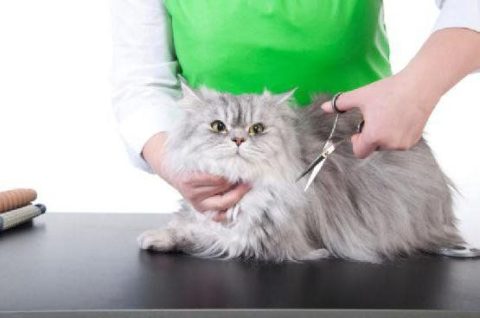
- Fluid builds up in the bronchi. Violated cardiac activity, its rhythm (due to the accumulation of fluid in the pericardium and hypotension). The activity of the gastrointestinal tract is disturbed. There is itching.
All of the above violations in the Cat develop after a bee sting at lightning speed and lead the Cat to a state of shock.
Clinical picture. Symptoms of anaphylactic shock appear in the Cat immediately after being bitten by a bee, wasp, etc.
When examining the oral mucosa and visible mucous membranes of the eyes, the veterinarian notes their pallor and cyanosis. A weak pulse can be felt, with auscultation of the heart — tachycardia. The extremities are cold on palpation. The cat is lethargic, tends to lie down. After the bite, the owners of the Cat note the appearance of involuntary urination and defecation. The Cat develops vomiting (vomiting in Cats), diarrhea (diarrhea in Cats), excessive salivation (Cats drooling), rapid breathing.
If emergency veterinary care is not provided, the Cat will experience convulsions, loss of consciousness, coma and death.
First Aid. When a Cat has anaphylactic shock as a result of a bee sting, first aid consists in an emergency restoration of the activity of the cardiovascular and respiratory systems. A sick Cat should be taken to a veterinary clinic as soon as possible, where veterinarians will intravenously inject epinephrine or its synthetic analogue, epinephrine. As a result of the use of these drugs, the Cat stabilizes the frequency and strength of heart contractions, constriction of blood vessels occurs, and the release of an inflammatory mediator is simultaneously blocked.
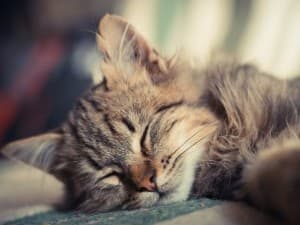
In the event that the Cat has a laryngeal edema as a result of a bee sting, tracheal intubation is performed.
In case of hypotension, therapeutic fluids are administered intravenously to increase blood volume. In the event that it is not possible to raise blood pressure, vasoconstrictor drugs (dobutamine, etc.) are used.
In order to relieve swelling in the larynx, diphenhydramine and dexamethasone are administered intravenously.
How to renderhelping a cat on its own at home if bitten by a bumblebee
It is not always possible for Cat owners to deliver their Cat to a veterinary clinic in a timely manner.
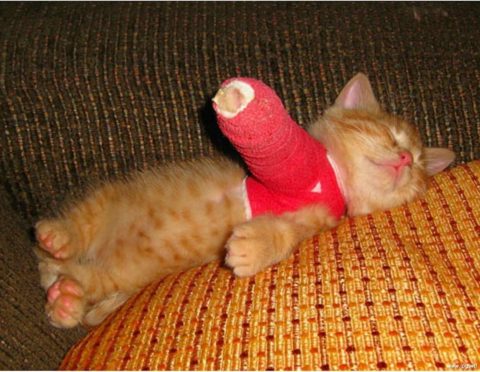
In the veterinary first aid kit, Cat owners should always have epinephrine or epinephrine for intravenous administration (the dose of the drug should be calculated in advance for the weight of the animal). If it is not possible to administer the drug intravenously, then it will have to be administered intratracheally. Why, stepping back from the Cat’s throat to the thickness of the little finger, we grope for the cartilage of the tracheal rings, and insert an injection needle between them.
Sources:
https://meowkiss.com/esli-koshku-ukusil-shmel-chto-delat-v-domashnix-usloviyax/